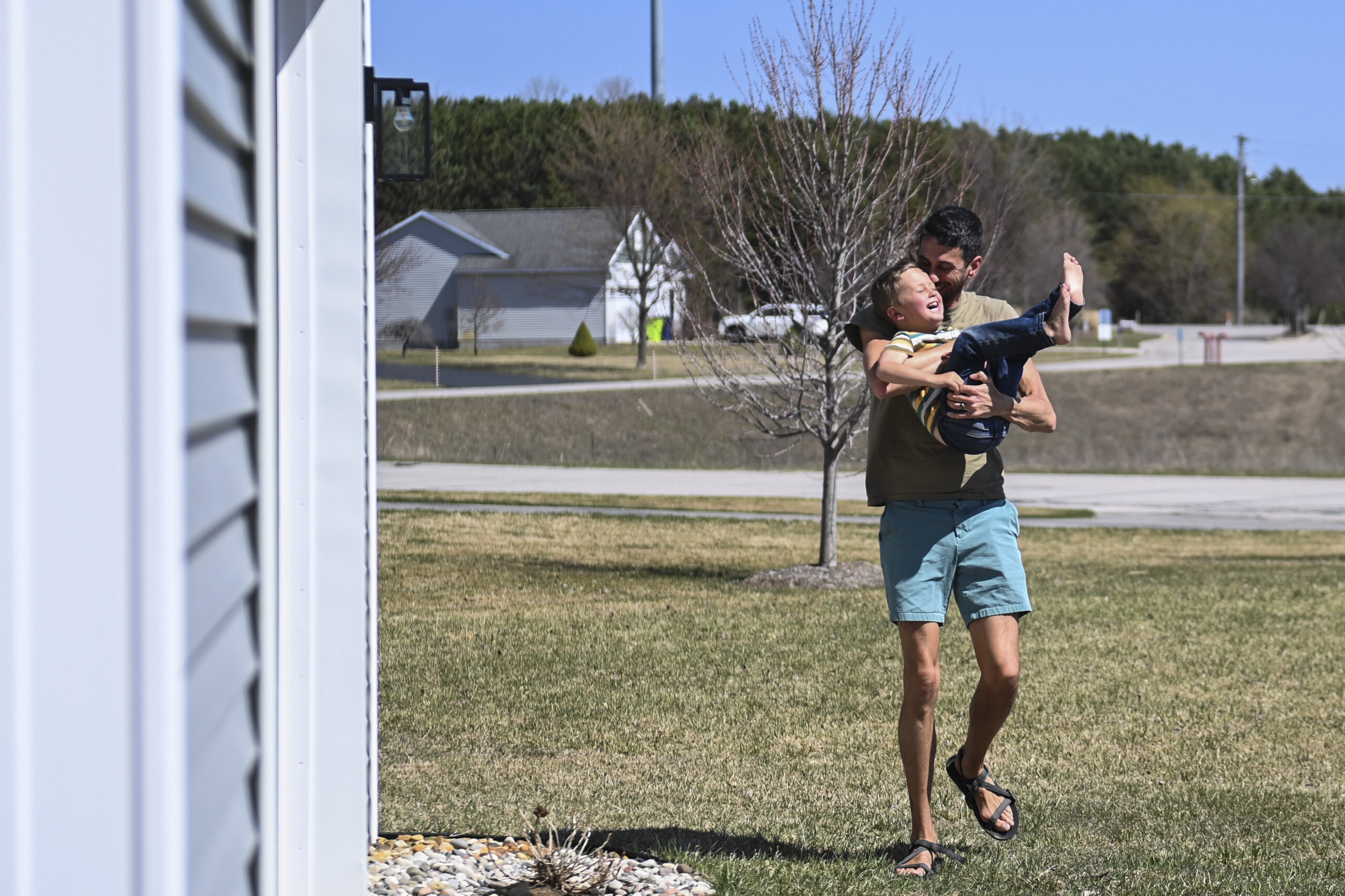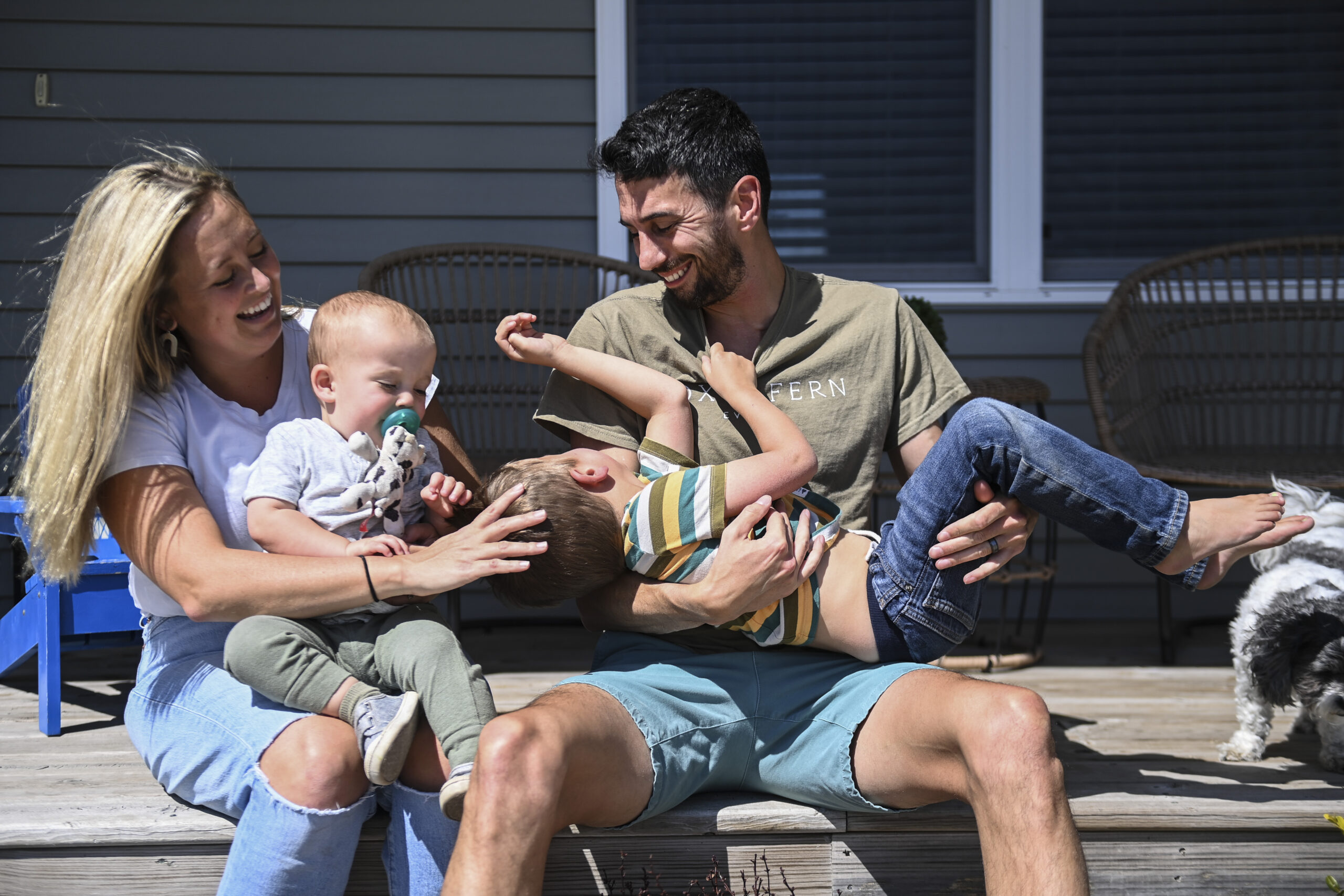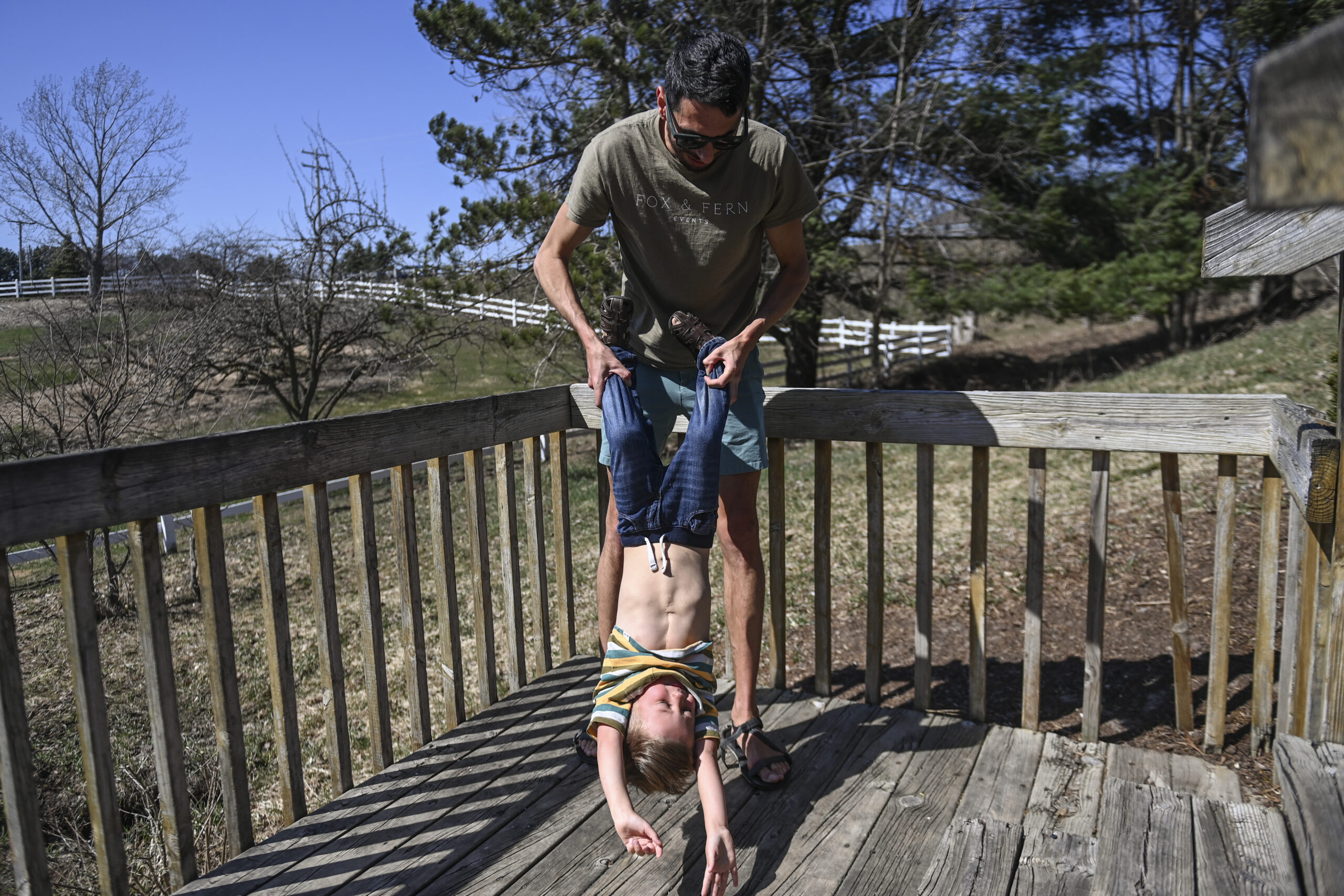When Meaghan and Dan Kenny heard the results of an anatomy scan at 20 weeks into pregnancy, they were terrified.
Something was wrong with their baby’s heart.
The Kennys had the test done at Corewell Health’s Helen DeVos Children’s Hospital pediatric clinic in Traverse City, Michigan, where they live.
“I was driving when I got the call with the results,” Meaghan said. “It was startling to hear. I felt so … isolated.”
“Soon after that we drove to Corewell Health’s Helen DeVos Children’s Hospital in Grand Rapids,” Dan said. “We met with a pediatric team there and knew then and there we didn’t need to search for care anywhere else. We were in good hands.”
The anatomy scan on their baby—their first—indicated a condition called pulmonary atresia with intact ventricular septum.
Pulmonary atresia is a congenital heart defect. It happens when the fetal heart does not form correctly.
The pulmonary valve connects the right ventricle of the heart and the main pulmonary artery, which carries blood to the lungs.
With pulmonary atresia, this valve doesn’t function properly. Blood doesn’t pass through to the lungs and is forced to find another route.
This can prevent the baby’s cells from receiving enough oxygen.
The defect forms in the first eight weeks of life, but the cause is unknown. Without treatment, a baby born with pulmonary atresia cannot live long.
A frightening prospect
The Kennys were told that their baby would require surgery soon after birth.
James Kenny was born on May 7, 2019.
“My labor was induced a week early so that I could be at Helen DeVos Children’s Hospital when James was born,” Meaghan said. “He weighed 6 pounds, 7 ounces.”
Baby James was immediately taken to the neonatal intensive care unit.
“Splitting up our family, that was the hardest part,” Dan said. “We didn’t even know James yet.”
“I first met James when he came into the NICU,” said Allison Amidon, a nurse practitioner with Corewell Health. “Anytime parents get a fetal diagnosis like the Kennys did, that’s frightening.”
She said there’s a lot of information to take in.
“We do what we can to keep families informed in detail at every step along the way,” Amidon said.
The Kennys met with the pediatric team in a conference room to go over baby James’ care plan. They explained the surgery he would need in detail, while showing images illustrating the procedure on a screen.
“It was scary,” Meaghan said. “But we had a lot of faith in our doctors.”
A successful hybrid procedure
On May 10, 2019, at just three days old, baby James underwent his first surgery, a hybrid procedure.
Marcus Haw, MD, division chief and director of cardiac surgery at Helen DeVos Children’s Hospital, explained the procedure.
“The surgical team opened his chest and passed a needle into the right ventricle,” Dr. Haw said. “He perforated the pulmonary valve and passed a wire across it and put in two stents across the valve, creating a passageway to improve blood flow.”
When you have this condition, the right chamber of the heart becomes thick and muscular because of the pressure, he said.
“The stents bring that pressure down so that the heart can pump better,” Dr. Haw said.
The stents, Dr. Haw said, are not a permanent fix. As a baby grows, the heart grows. James would need surgery again as he grew bigger.
James remained in the in the cardiovascular pediatric ICU until May 27, 2019.
Over James’ first months, doctors watched his oxygen levels closely. As his heart grew larger, the stents began to leak and his oxygen level dropped into the 80s.
It was time for his next surgery—this time an open-heart surgery.
“He seemed so healthy at that age,” Dan said. “It made it harder to bring him back in.”
“James was already in the high percentile of weight and height by then,” Meaghan said. “He was crawling, had two teeth and was eating real food.”
Dr. Haw met with the Kennys when James was 8 months old in January 2020.
“The initial stenting had been successful; the pressure on his heart had fallen to an acceptable level. But as he grew, his heart—the right atrium—began to leak as he outgrew the stents,” Dr. Haw said.
A second surgery
February 19, 2020, James had open-heart surgery.
This time, assisted by Dr. Baliulis, Dr. Haw put the little boy on a bypass machine.
He removed the outgrown stents, divided the pulmonary artery, and attached a new pulmonary valve from a donor. The right atrium of James’ heart had enlarged, so he reduced its size and repaired the bicuspid valve.
The doctors watched his oxygenation levels and blood pressure closely before removing the bypass equipment that supported James.
After his heart stabilized, he transitioned to pediatric intensive care to recover.
When James returned home, his family monitored him closely.
“We tell parents to call us if they see any changes,” Amidon said. “Changes in coloring, weight gain not happening, rapid breathing, changing eating habits or not eating well, or if the child is very tired. We want to know about any such changes.”
James showed none of these signs. He was the picture of health and continued to thrive.
We can win this
Now three-and-a-half years old, James has a new best buddy—his little brother, Emerson.
“He’s such a happy guy,” Meaghan said. “He loves to play with our dog, Daisy, and run around the park and talk—he’s a great talker. He will play Candyland and Chutes & Ladders with his little brother and say to him—maybe we can both win this. And he loves superheroes.”
That includes the superheroes at Helen DeVos Children’s Hospital, where James goes in every six months for a check-up at the Traverse City clinic.
He won’t need heart surgery again until his teen years, says Dr. Haw.
“Whenever we see the nursing team at the hospital, they are all just incredible,” Meaghan said.
“On another level,” Dan nodded.


























 /a>
/a>
 /a>
/a>
 /a>
/a>
Love this love story! ❣️